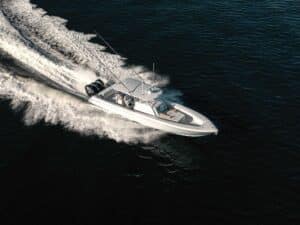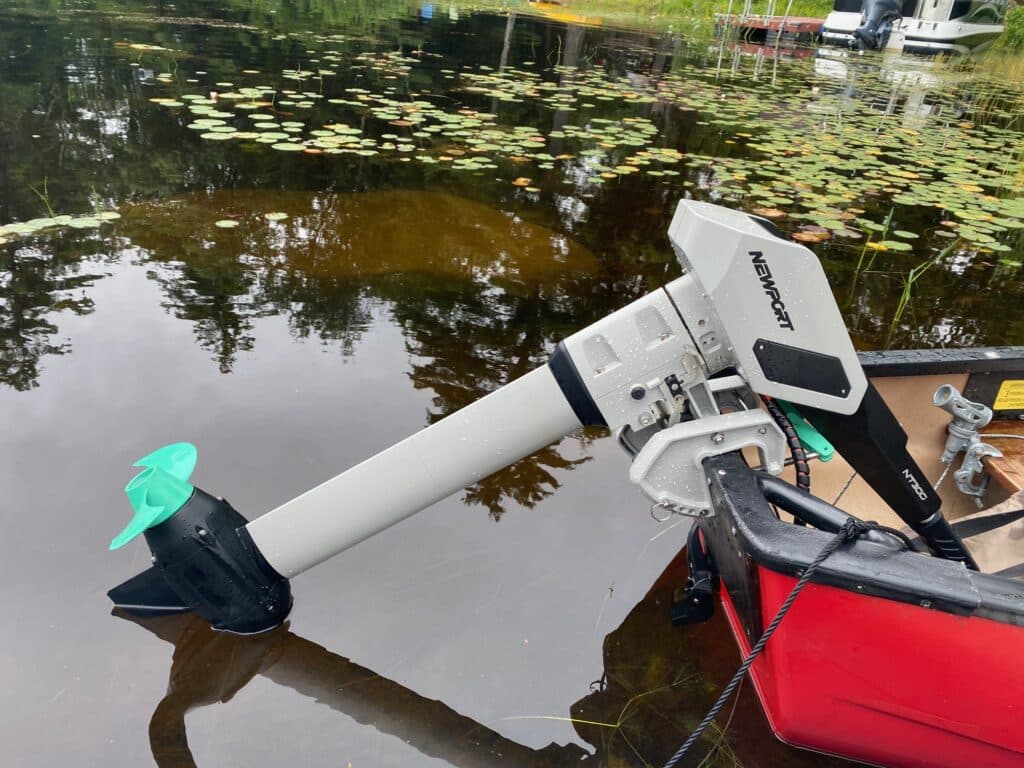
My first experience with electric-powered boats came on a six-grade trip to our nation’s capital. Though we were there to visit the Smithsonian, the trip involved a detour to Baltimore Harbor for reasons that are lost to time. While there, we were permitted to pilot small, two-seat vessels that moved about at a couple knots via electric motors. I remember the novelty of zipping through the harbor silently, racing my classmates within the confines of the buoys laid out by the attraction as a course.
I had all but forgotten about electricity as a power source for boats since then, aside from the ever-present trolling motor. But recent advances in battery power have made electricity a viable source of primary propulsion for vessels large and small. Now, you can find a variety of electric outboards on the market, from manufacturers like Newport, Torqeedo, Elco (which was founded way back in 1890), and even Mercury. While most of these are smaller motors, some are comparable to 80-hp gas engines. I recently had the opportunity to test out the Newport NT300, a 3 horsepower equivalent, and found it to be an excellent substitute for a gas motor, with many of its own benefits.
History of Electric Propulsion
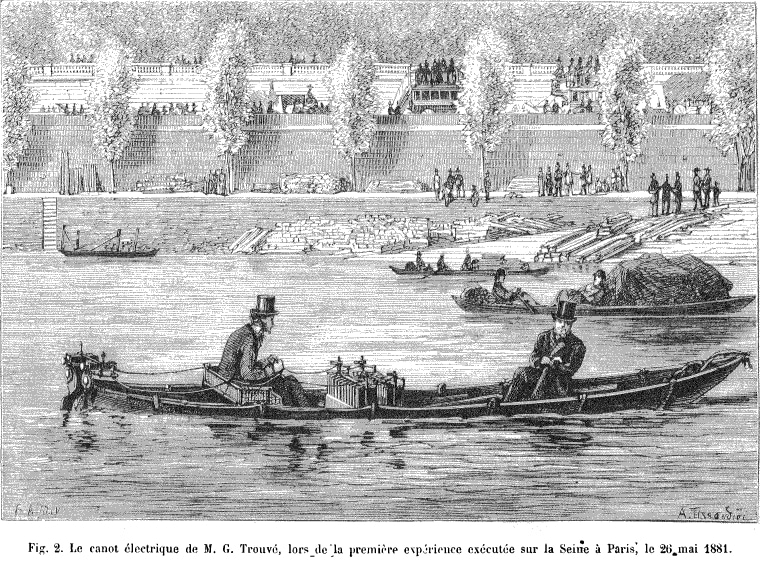
Electric-powered boats aren’t exactly new, with the earliest models debuting over a century ago. A 24-foot boat capable of carrying 14 passengers was supposedly demonstrated on the Neva River in Saint Petersburg, Russia in 1839. Brainchild of German inventor Moritz von Jacobi, the vessel was reported to have achieved speeds of 3 miles per hour.
A small electric motor was patented by French electrical engineer Gustave Trouvé in 1880, and ushered in an era of electric power. By 1882, commercial launches were taking passengers up and down England’s Thames River. And in 1893, a fleet of 55 electric-powered launches ferried attendees at the Chicago World’s Fair, putting the technology on display on the world’s stage. Some estimates state that the vessels moved as many as one million passengers during the fair.
Electric power was much easier to harness than steam, so it dominated the water until the proliferation of the gasoline outboard around 1920. The storage capacity of onboard fuel tanks exceeded what the batteries of the time were capable of, so it made sense that gas engines took over. But electric power never completely went away on the water, with a handful of commercial electric boats in service, mostly scattered throughout Europe.
What is an Electric Outboard?
Trolling motors are all but standard equipment on fishing boats fresh and salt these days, but electric outboards are different. While trolling motors are designed as a secondary propulsion system to sneak anglers through and around structure or hold them in place over a productive piece of bottom, electric outboards are intended as primary propulsion to get boats from Point A to Point B. To do so, electric outboards typically have larger, more efficient motors. This lets them zoom to distant spots at a more rapid pace, and typically provides longer battery life.
Some credit Morton Ray, founder of Ray Electric Outboards, with producing the first electric outboard in 1973. This unit was similar in appearance to conventional gas outboards, housing the direct current powerhead in a cowling on top and transferring the energy through a midsection and out through a “lower unit” to a propeller.
That configuration is the exception to the rule, with most manufacturers placing the electric motor where the lower unit would be in a conventional outboard. These designs are much simpler, with a waterproof housing holding the motor and a direct-drive shaft turning the prop.
Powering an Electric Outboard
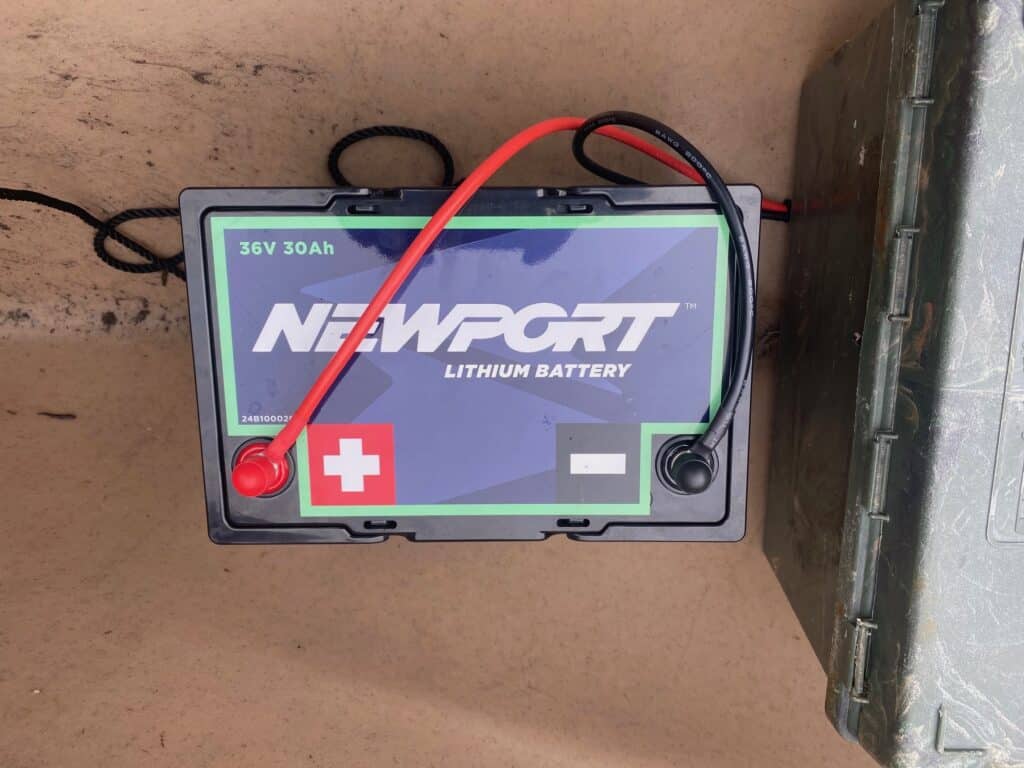
Electric outboards are fairly power hungry, and typically require at least 36 volts to operate, though some need more and some less. Typically, more volts translate to more power at the prop. To achieve a 22-horsepower equivalent, Ray Electric Outboards’ System 700 motor needs 72 volts.
Some electric outboards use proprietary battery packs that are inserted into the assembly, and others hook up to batteries in a much more conventional manner. Because they need to pack a lot of power into a small space, the integrated battery packs utilize lithium ion technology. Batteries that can be hooked up using wires can be of any chemistry, as long as they are capable of producing the correct voltage.
You can wire three lead acid 12-volt batteries in series to achieve 36 volts, which lets you use cheaper batteries at the expense of weight. Or, you can grab one of the increasingly common 36-volt lithium ion batteries on the market. These are very light in weight and can be hooked directly to 36-volt motors. Unfortunately, they are currently more expensive than legacy battery types and require specific chargers. But many find the weight and simplified rigging to be worth the cost.
Benefits of Electric Outboards

Electric outboards offer many benefits over their internal combustion counterparts, with the most noticeable being the lack of noise that accompanies their use. While modern four stroke gas engines are much quieter than their predecessors, they still produce a fair amount of noise—particularly if you pour the coals on. With no explosions taking place, electric outboards are just about silent.
The lack of maintenance required is another high point of owning an electric outboard. Unlike a gas outboard, you don’t need to change the oil every 100 hours. You don’t need to change lower unit oil either, or worry about water pumps.
No gas means there’s no potential for spills, and no exhaust fumes. It also means no trips to the filling station either, which saves some money. Industry estimates put the cost of a typical charge for a 36-volt battery somewhere in the neighborhood of a buck, which is much less than you’ll pay for a gallon of gas.
Disadvantages of Electric Outboards
There’s no getting around it: You need to charge batteries for them to continue to power a motor. This takes much longer than filling a gas tank, from a couple of hours to overnight depending on the size of the battery and the state of discharge. And this requires being on the power grid, or at least a portable generator. So if you’re really out there in the woods, it’s probably easier to bring a gas motor and a few jerry cans.
Temperature is another factor that can negatively affect electric outboards, or should I say their batteries. Anyone that’s had a hard time starting their car during a tough northern winter knows that battery performance can suffer, losing as much as 30 percent of its stated capacity. Lithium ion batteries tend to fare better when the mercury plummets, with only about 2 to 5 percent reduction. There are concerns about charging lithium ion batteries in below freezing temperatures, but that’s probably not something any boater needs to be concerned with.
A Week with the Newport NT300

I recently had the chance to test out Newport’s NT300 3 horsepower equivalent electric outboard and 36V 30AH Lithium Battery on a week-long trip to a lake in New Hampshire’s White Mountain region. I typically outfit my square stern canoe with an aged eggbeater of a motor that propels the boat well, but wakes everyone on the lake up with its two-stroke scream. Equipping the same canoe with Newport’s NT300 only produced the sound of rushing water being pushed by the prop. The whole experience was so silent that a pair of inquisitive loons swam alongside me several times over the week of testing.
The motor attaches in much the same way as every other small outboard I’ve used, by tightening a couple clamps on to the transom. These never worked themselves loose in the way that they sometimes do with gas outboards, probably because the NT300 didn’t seem to vibrate as much. There is a pin to set the motor attitude, and has a fairly wide range of adjustment so this should work on a variety of vessels. I used an extension to place the battery up at the bow of the canoe, but with it only weighing 24 pounds this might have been unnecessary.
The motor functions in a similar fashion to a transom-mount trolling motor; twist the throttle one way and it goes forward, the other way and it goes backward. There was a reverse lock to keep it from going skyward when you back up, which is much needed because that torque will lift it right out of the water. The kill switch is magnetic, and shuts the motor off instantly when removed. Overall, it was just like running any other tiller outboard I’ve used.
I was a bit surprised by the throttle response, though I suppose I shouldn’t have been. The high torque created by electric motors translates into near instant acceleration. I’m used to twisting the throttle, waiting for the engine’s RPMs to increase, and then waiting even longer for that to make it to the propeller. With the NT300, there’s a half a second or less pause between actuating the throttle and full acceleration. There were a couple of times that I surprised myself, and found the canoe’s seat rather quickly.
There is one similarity between a gas outboard and the NT300, and that’s “fuel” consumption. On a typical gas outboard, there’s a sweet spot where the engine is most efficient. Go beyond that, and you blow through fuel at an exponential rate. On the NT300, running wide open depleted the battery in short order, but even reducing the throttle to 80 percent increased range by a large margin with little reduction in speed.
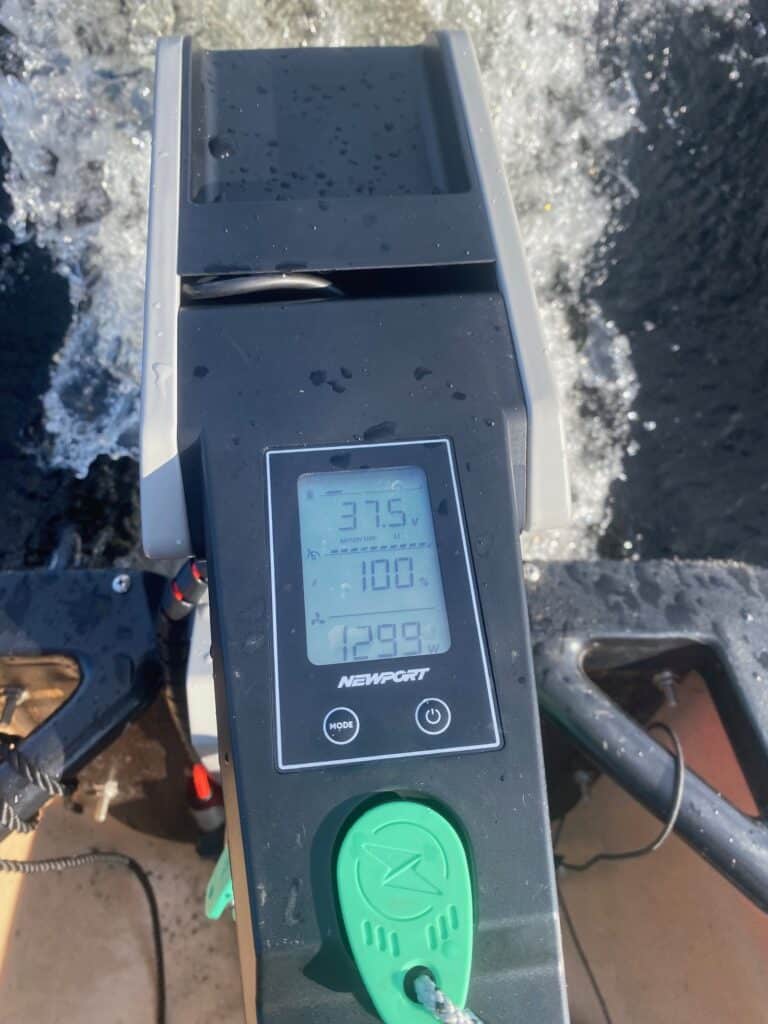
The motor’s LCD display made it easy to know throttle position, and the amount of power that was being utilized. At wide open throttle, I got a little over an hour run time. At 60 percent throttle, I was able to run around for most of the day. Using the throttle sparingly, I could go from dawn to dusk, juicing it when I wanted to cover distance quickly. I initially dismissed the battery’s app as a gimmick, but it allowed me to track energy consumption in real time, seeing the amount of current being drawn.
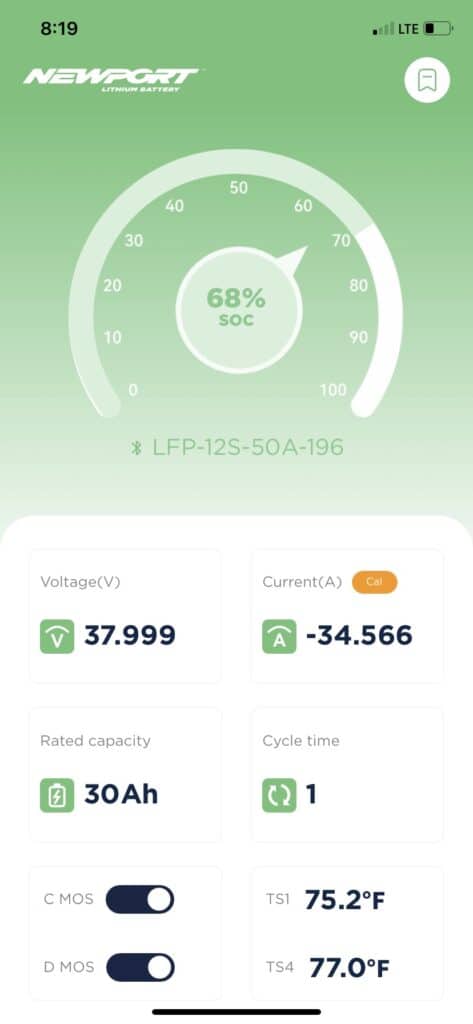
Speed was about what I would expect with a gas motor, if not a little more. A GPS app on my phone stated I was moving along at about 7 miles per hour, which seems right to my calibrated eyeball. Though the NT300 isn’t designed as a trolling motor, the infinitely variable throttle let me crank the output down as low as 1 percent, allowing me to creep along. I was even able to set the throttle to counteract a particularly annoying tailwind, holding the canoe in place so I could stand and fish with ease.
You might be wondering what happens to the motor if you hit a rock. Unfortunately, I can answer that after contacting a submerged boulder at speed. There was a minor nick on the skeg and some slight damage to the prop, but the motor’s function didn’t seem to be affected. The NT300 continued unbothered.
The Verdict
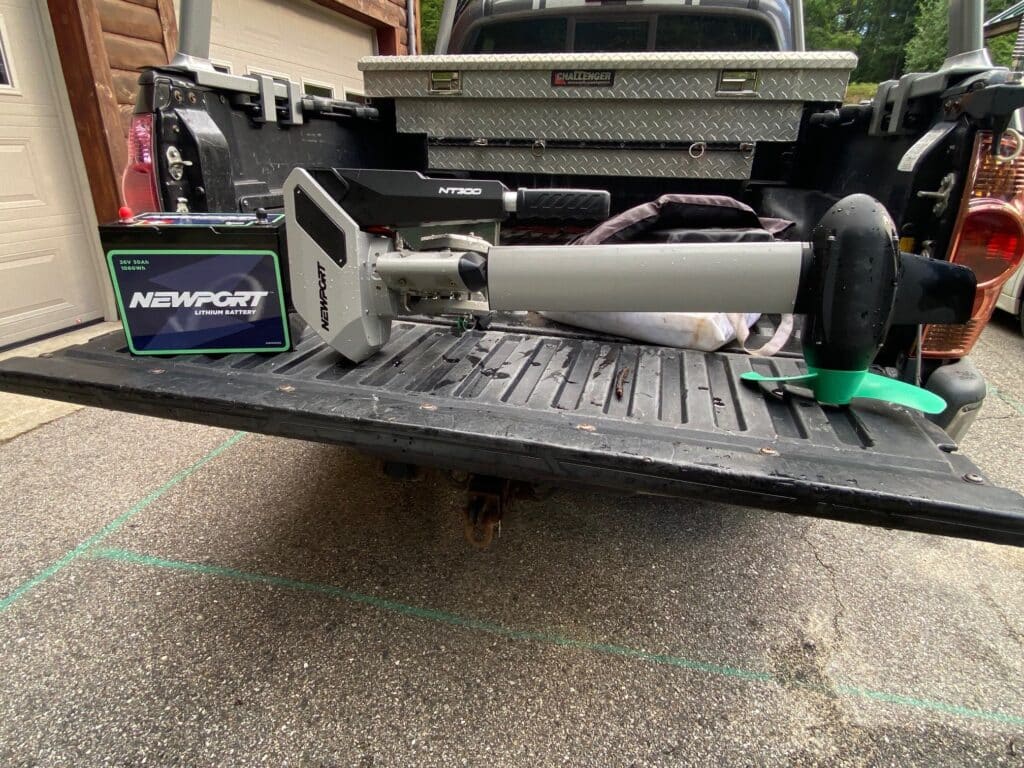
A few years ago, I probably would have laughed at the idea of an electric outboard. But after using one for a week, I believe that battery-powered outboards have a place in both fresh and saltwater fishing. I have only just begun to experiment with mine, but my initial experiences suggest this is perfect for sneaking up on spooky fish in skinny water, exploring quiet backwaters or equipping a dingy for launch duty. I think we will see more electric vessels in the near future.




